How can we manage Earth’s land?
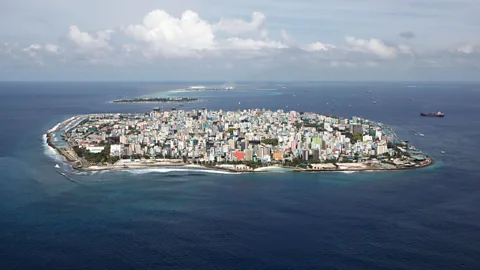
Overpopulation, climate change, mass migration… our relationship with terra firma has never been more complicated. Could Earth’s land be an overlooked, increasingly precious resource?
Grand Challenges
In this special series, Future Now takes a close look at the biggest, most important issues we face in the 21st Century.
For two months, we'll bring you insight from leading scientists, technologists, entrepreneurs and influencers to help you make sense of the challenges we face in today's rapidly evolving world.
From the sky, it looks like an entire city is adrift in the Indian Ocean. A forest of tower-blocks rise above the emerald-coloured water while just a handful of trees poke through the canopy of concrete.
For those living in Malé, the overcrowded capital of the Maldives, there is no choice but to build upwards.
Caged by the sea, they have no more land to spread onto, yet the city’s population has soared by nearly 52% since 2006. The last census in 2014 counted 158,000 people crammed into the city’s 2.2 sq miles (5.7 sq km) of space, and officials say the figure has since grown further.
“When people think of the Maldives, it is usually of a beautiful paradise with crystal clear lagoons and white sand beaches,” says Shamau Shareef, the city’s recently elected deputy mayor. “Malé is very different. We have very limited space and life is tough.”
Space is such a premium in Malé that pavements are often less than three feet wide, forcing pedestrians to walk in single file, while many streets have no sidewalk at all.
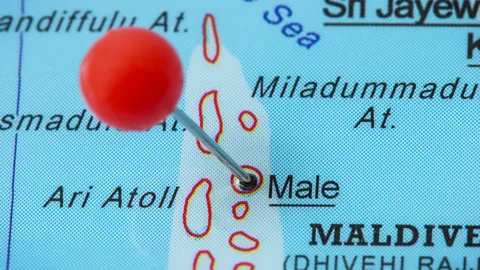
Rents have risen exorbitantly and, in some of the poorest areas, up to 40 people can be crammed into buildings with just 250 sq feet (23.2 sq metres) of space - about the same size as a small studio flat.
With so many people living under each others’ feet, crime, drugs and domestic violence have risen alarmingly while the city frequently runs out of water. An entirely new island has risen out of the sea from the city’s garbage.
“In the early 1990s the tallest buildings in the city were only two storeys high,” says Shareef. “Now the average height is eight storeys and some are 25 storeys high. People are coming here because this is where the health, education and jobs are, but overpopulation is leading to many socioeconomic problems.”
Although extreme, Malé is an example in miniature of something that is happening on a far larger scale around the world. With 83 million more people appearing on the planet every year, rising populations are placing increasing pressure on the land.
The UN’s latest estimates state that there are 7.6 billion people jostling for space on Earth at present and that number will rise to 9.8 billion by 2050. By the end of the century, their projections say there could be 11.2 billion people on our planet.
Each of those people will need somewhere to live, a place to work, fertile land to provide them with food. They will need water and energy to stay warm or to light their way at night.
They will want roads to drive on and places to park. For the lucky ones, there will be space for their pastimes and leisure activities.
But for all of them, there can be no doubt the impact they will all have on the land – and those impacts are managed – will be one of the grand challenges facing humanity in the coming century.
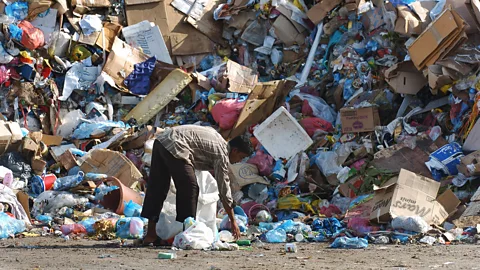 Getty Images
Getty ImagesHabitable vs uninhabitable land
At first, it can be easy to dismiss fears that mankind may one day run out of space as ridiculous. Physically, the land can easily accommodate 11 billion people - there are around 13.4 billion hectares of ice-free land (51.7 million sq miles) on the planet.
But large tracts of land remain virtually uninhabitable due to their climate or their remote location: Enormous tracts of Siberia are too inhospitable to be lived upon. And the huge landmass at the centre of Australia is too arid to support many people, meaning the majority of its population is clustered along its coastline.
Meanwhile, cities and urban areas, like Malé, cannot keep growing indefinitely. They are bound by the natural landscape that surrounds them, whether it’s ocean or mountains. The land that is habitable faces challenges, like crowded cities and growing populations.
“If you have that many people, there will obviously be a much greater demand for natural resources and food production,” says John Wilmoth, director of the UN’s Population Division. “But there has been a lot of misplaced attention that has tried to look at population control or limitation as a solution.”
Experts say it’s misguided to just focus on population numbers, and whether there’s enough space on the planet to fit everyone.
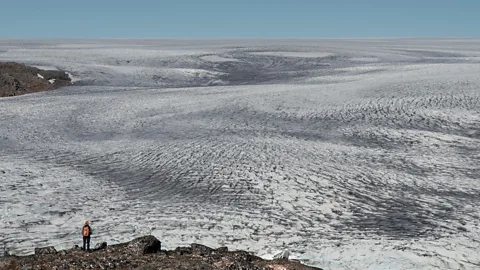 Alamy Stock Photo
Alamy Stock Photo“The countries where populations are growing the most are actually using the least of the Earth’s resources per person,” warns Jonathan Foley, executive director of the California Academy of Sciences who has spent his career studying the impact human civilisation has on the environment. “Those of us in the rich and developed world consume far more than our fair share.”
The cities and towns we live in account for less than 3% of the Earth’s total land area, but between 35% and 40% is used for agriculture. As populations grow, many fear that more land will be used up to grow more food. And land management has a lot to do with resource management – what we eat, how we grow it, and how we eat it.
To feed the world’s growing population, a study by researchers at Stanford University estimated that between 2.7 million and 4.9 million hectares (10,400-18,900 sq miles) of additional land will be required. There are around 445 million hectares (1.7 million sq miles) thought to be suitable for growing crops left in the world.
The researchers predicted that increasing demand for food, biofuels, industrial forestry and the spread of urbanisation will result in this reserve of land being completely used up by 2050.
So in the 21st Century, how will be able to manage land to not only fit all the extra people, but also to fit all the crops that will feed the extra people?
Making room for farms
The bad news? The demand for new cropland and pastures for animals is already thought to have caused 80% of the deforestation taking place around the world today, wiping out large areas of rich biodiversity and trees that act as natural sinks for greenhouse gases.
But the good news? According to Foley, it does not have to be this way.
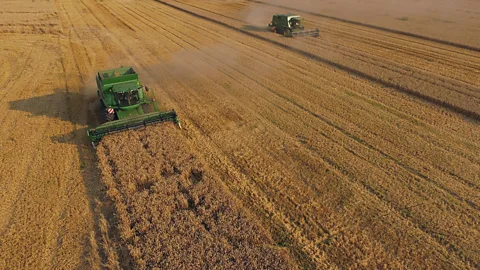 Getty
Getty“The way we use land right now is extremely inefficient,” he says. “So much of our land is being used to grow food for livestock - 75% of the world’s agricultural land is used for feeding animals that we then eat ourselves. About 40% of the food grown in the world is also never eaten by anybody - it is thrown away. That means all that land it is grown on is being wasted.”
So, a possible solution: eat less meat and throw less food away.
Already, “there is progress being made,” says Foley. “China is already talking about reducing meat consumption and there are efforts to reduce food waste in Europe and US.” Curbing consumption habits can lead to less land use on agriculture.
About 40% of the food grown in the world is also never eaten by anybody - it is thrown away. That means all that land it is grown on is being wasted - Jonathan Foley, executive director of the California Academy of Sciences
In wealthier parts of the world, however, our consumption extends far beyond just food.
Space for a growing middle class
Increasing prosperity in many parts of the developing world, along with countries like China and India, is leading to a burgeoning global middle class. It’s a group that’s expected to account for 4.9 billion of the population by 2030.
With each of these people buying refrigerators, mobile phones, televisions, computers and cars, the demand for energy is expected to double over the next two decades.
And in a place like Malé – a tiny capital with an exploding population – that’s a grand challenge to tackle.
“We need to be worrying less about whether we are going to be able to grow enough food or provide enough energy and look at the aftereffects of consumption,” argues the UN’s John Wilmoth. “If we have improvements in living standards around the world occurring as population is growing, they will multiply to have much a larger effect on the Earth and the environment.”
Exactly how the world will meet this demand in the face of efforts to reduce climate change could greatly affect how much land we have at our disposal. And that’s a problem for the highly dense population centres on Earth’s coasts.
Rising seas claim coastal land
Historically, trade has fuelled the rise of middle classes and wealth in coastal areas. That’s led many of those cities to be some of the most crowded on our planet.
A study by researchers at Kiel University in Germany and the Tyndall Centre for Climate Change Research in the UK estimated that there were 625 million people living in low lying coastal areas in 2000. By 2060 they predict this will have soared to more than a billion.
But add in climate change, and things get a lot more complicated.
“The coast is a restricted space and so there is a lot of pressure on the environment and ecosystems there,” says Barbara Neumann, an expert on coastal risks and sea level rise at Kiel University who led the study.
“Sand dunes act like a natural flood barrier, for example. If we take them away we remove a lot of the protection against coastal storms and rising sea levels.”
Rising sea levels due to climate change are likely to put further pressure on these packed coastal regions, she warns. Island nations like the Maldives are particularly vulnerable to loss of land in this way. Miami in Florida is another famous example.
“Malé is just two metres above sea level,” explains Shareef. “We already have sea swells during the monsoon each year but climate change is going to make that worse.”
Further away from the coast, growing populations are spilling onto land that will leave them more vulnerable in the future.
In Bangladesh, where 80% of the country is a flood plain, tens of millions of people are affected by vast floods that occur every few years. Suddenly, land is at a premium
Even in developed countries like the UK, pressure on housing has resulted in large scale developments on land known to be prone to flooding. In the past decade, flooding in these areas has caused damage that has stretched into billions of pounds.
“We need to balance the population growth and development with conserving the natural systems that protect us,” says Neumann. The low-lying Netherlands, for example, has tackled its problems with flooding by giving the water back some space to spill into. It is an approach that other countries, including the UK, have said they hope to follow.
But changing, turbulent weather patterns might not just affect our city’s own land. It could affect our neighbour’s, too.
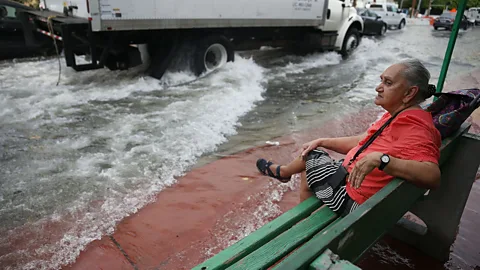 Getty Images
Getty ImagesClimate change leads to migration
Around 21.5 million people are forced to leave their homes due to weather-related disasters each year.
“Drought in northern Syria led to a mass migration of people from rural areas to cities like Aleppo and became one of the spark plugs for the terrible conflict we are seeing there now,” says Lloyd Axworthy, chair of the World Refugee Council and former foreign minister of Canada. With climate change also expected to exacerbate droughts, floods and storms, Axworthy warns the problem is likely to worsen.
According to the UN Refugee Agency’s latest figures, 65.6 million people were forcibly displaced by conflict and persecution in 2016, around 300,000 more than the previous year and the highest number since World War Two.
“This not a one-off,” warns Axworthy. “There are big areas of land that are running out of the fundamentals of life. Many governments are so bad that they do nothing about this. This means other countries are having to subsidise and support large populations whose own means of growing food or living has been diminished.”
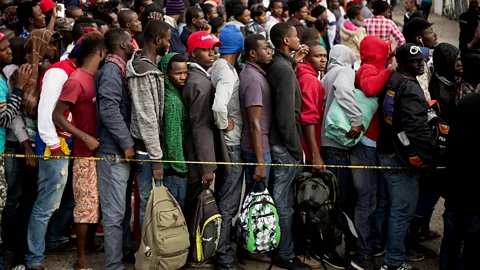 Getty Images
Getty ImagesIt means there are ever growing challenges to find space for the people uprooted by war, famine and drought. Of the people uprooted last year, 22.5 million sought refuge across international borders. Finding new homes for such large numbers of people is already proving difficult - just 189,300 refugees were admitted by other nations for resettlement in 2016. The majority remain housed in vast camps or living as stateless individuals, all of them requiring food, water and shelter.
Without land of their own to get these fundamentals of life, they have to rely on others to provide them. A list of factors, like war, famine and drought, complicate what countries like Greece and Uganda can choose to do with their land – an influx of refugees from Syria and South Sudan, respectively, have strained already thinly stretched natural resources.
‘A problem that does not recognise borders’
Back in Malé, and in many other places around the world, more mundane reasons than conflict and water shortages are cramming the land.
Access to amenities like healthcare, education and jobs have long drawn rural populations into cities. More than half of the world’s population now live in urban areas. Just like in Malé, this is putting a huge strain on relatively small patches of land.
City living also requires careful planning - while many in the world live relatively comfortable urban lives with running water, sanitation and waste disposal, cities in the developing world are blighted by huge slums where no such infrastructure exists.
Africa and Asia are urbanising faster than any other parts of the world. By 2020 Africa is expected to be our planet’s second most urbanised continent with 560 million people dwelling in cities while Asia will have 2.4 billion. Yet according to the OECD, urban infrastructure in Africa is failing to keep pace and overcrowding is rife.
“The challenge is not that there is not enough space, but that we are not thinking about where people will be and what quality of life they will experience,” says Joel Cohen, head of the Laboratory of Populations at Rockefeller University and Columbia University. “Population growth is occurring most rapidly in the poorest countries where there are already slums. There are estimates that there could be an additional billion people living in slums by the end of the century.”
In short, every place has its own challenges.
In the cramped conditions of Malé, whose Maldives are famed for their natural beauty, nature has been squeezed almost completely out in its capital city. On top of all the other challenges we’ve already gone through, eco-friendliness is yet another bullet to add to the list.
“Twenty years ago we still had a lot of trees here,” says deputy mayor Shareef. “Now they have almost all been chopped down to make way for buildings.
And so on and so forth. Perhaps land’s pervasiveness on the planet, as well as its role as a basic building block of existence, is what invites such an array of issues.
The planet can certainly find space for many more of us to live on. But in the 21st Century, perhaps the real question we need to ask ourselves is who – and what – we want to share that land with.
--
